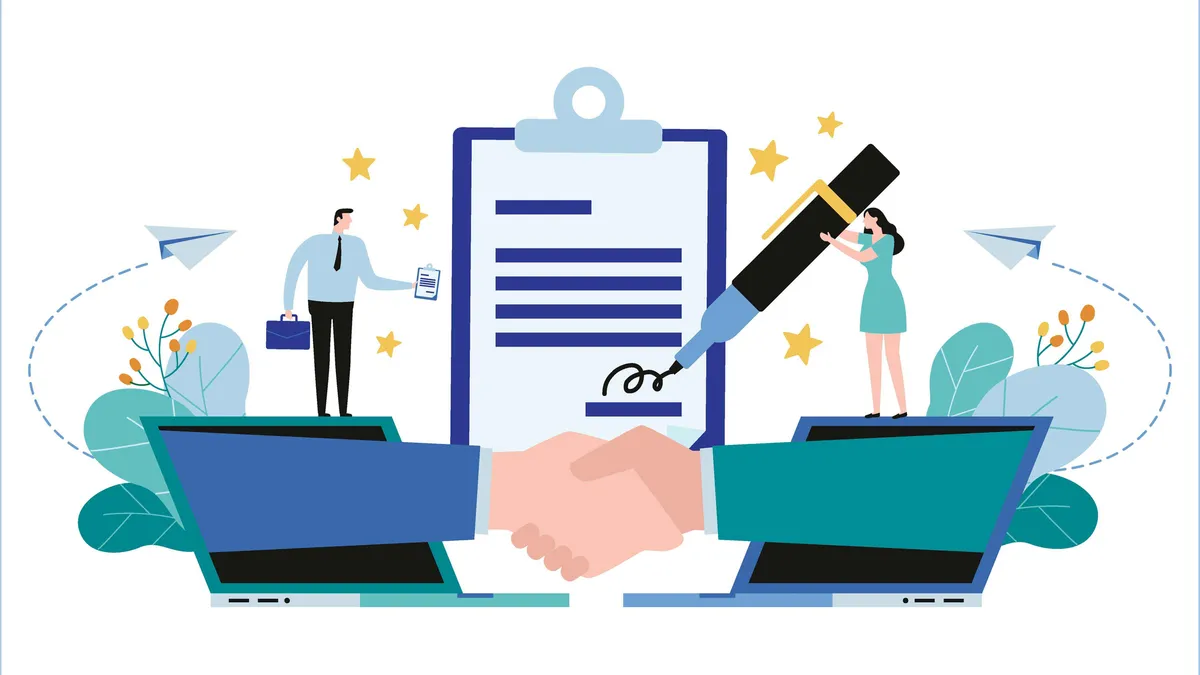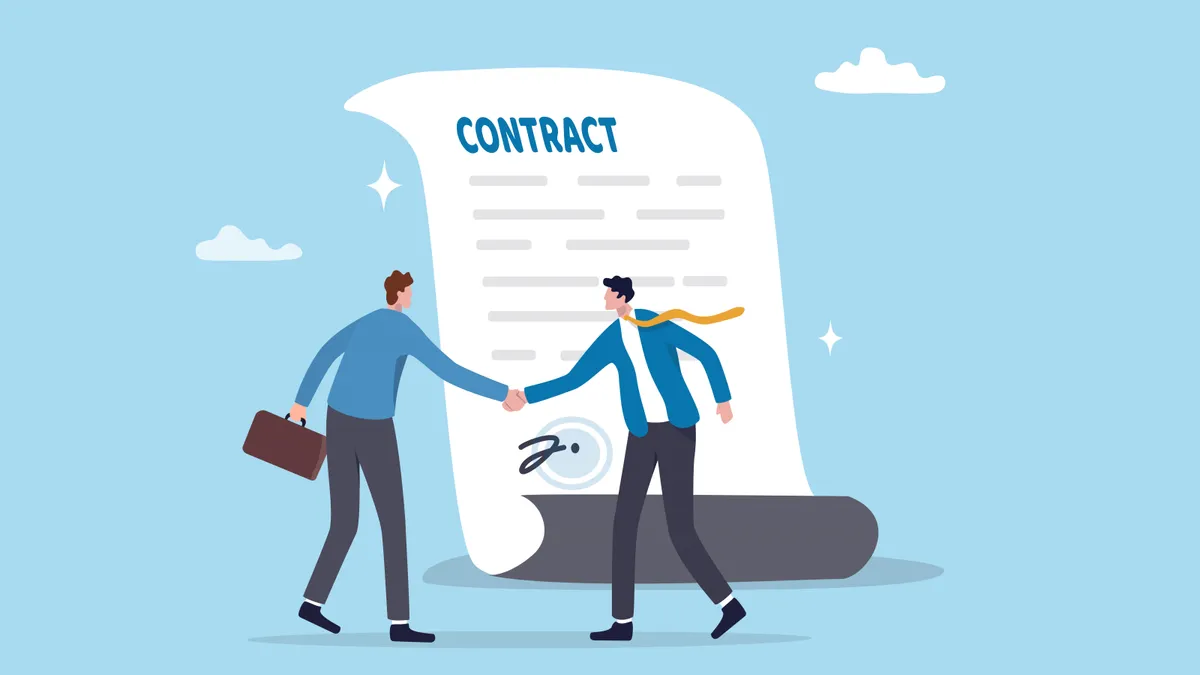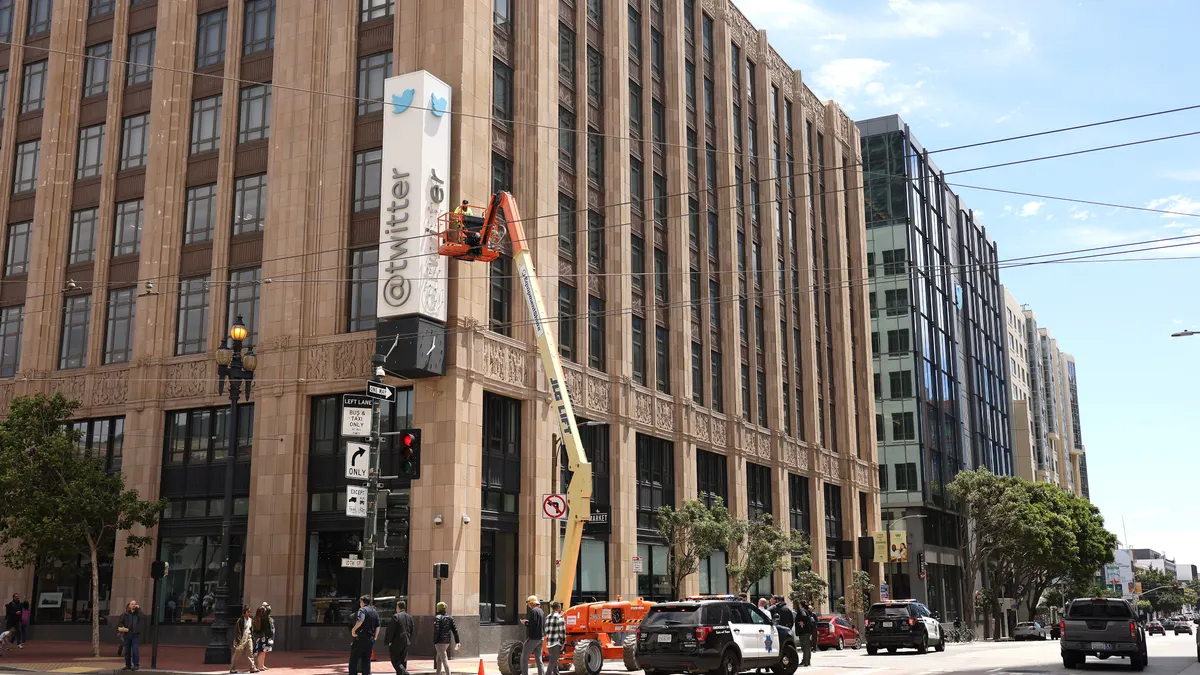Companies across the globe are purchasing contract lifecycle management (CLM) systems to streamline their contracting efforts and derive important business insights from their various agreements.
Legal departments, given the integral role they play in contracting, are typically intimately involved with business initiatives to buy and implement one or more of the growing number of CLM solutions on the market.
But legal technology consultants have found that legal departments and companies as a whole are moving too quickly to purchase expensive CLM platforms without doing the necessary preparation for effective implementations. As a result, many companies are struggling to successfully use the technological solutions they have purchased, with some quickly switching to new providers in hopes of better results.
Three representatives of alternative legal service providers told Legal Dive that there are several important steps in-house lawyers can help their companies take to facilitate a more deliberate approach to evaluating CLM technology adoption, which should set up their businesses for smoother implementations across departments.
Identify pain points and key contract types
Naseeha Machingal, director of client success and partnerships at LegalEase Solutions, said a CLM preparedness initiative should begin with the legal department helping to lead an assessment of where in the contracting process problems typically arise.
This review, which should entail communications with other departments in the business, can help companies determine if they need a CLM solution for pre-execution of contracts, execution, post-execution or for end-to-end contracting.
This is important because although representatives of CLM systems often claim their technology can effectively assist with many different stages of the contracting process, consultants say they are often more useful for certain tasks than others.
Machingal said the self-analysis can also prompt companies to take steps to improve their contracting process and workflows in advance of any CLM technology implementation, which will only help if they move forward with purchasing a solution.
Lucy Bassli, founder and principal of InnoLaw Group, said she recommends that legal teams and their business counterparts decide on a particular type of contract or subset of contracts they want to utilize CLM technology to help them manage. For example, a large pharmaceutical company may decide to devote its energies to improving the contracting process for clinical trial agreements.
This focused approach will set up a legal department and company for small wins along the way that pay off when they transition to the CLM system implementation stage.
“Every time I hear, ‘We want all contracts to go through the system,’ I can say there's a high probability that the implementation will not be successful in the way that they would hope it to be,” said Bassli, a former assistant general counsel of legal operations and contracting at Microsoft.
Form multidisciplinary teams
Bassli, who frequently uses #CLMreadiness in her LinkedIn posts, said legal departments considering implementing a CLM system should also ensure a broad mix of attorneys and other professionals within the department take part in the process.
While the level of involvement of the general counsel will vary depending on the size of the legal department and the company, Bassli said that at a minimum GCs must serve as the executive sponsors for the project.
Other legal department personnel who she recommends play key roles in CLM technology projects include lawyers who are experienced in contracting and legal operations or project manager professionals who are not lawyers.
“If you pair a tech-savvy or tech-curious attorney with a strong legal operations professional, that's kind of the dynamic duo,” Bassli said.
Multidisciplinary teams that include company personnel from outside the legal department are also important for companies crafting plans to implement a CLM solution, according to CLM experts.
Representatives from the business, finance, IT and procurement teams should be among the others involved with what Machingal likes to call a “transformation team.”
Identifying a champion among the transformation team is helpful too, said LegalEase Solutions CEO Tariq Akbar, and legal technologists are particularly effective champions for CLM projects. Those companies that have a strong champion make faster progress on their CLM initiatives than businesses who don’t have one, he said.
Some companies also decide to contract with an alternative legal service provider familiar with CLM solutions to help guide them through the process.
Identify essential functions
Meanwhile, a key activity for the internal CLM teams is determining what are the mandatory functions a CLM solution should possess and which functionalities are nice-to-haves. These determinations will vary by company and industry, and there are often differences of opinion between internal stakeholders that have to be ironed out.
“You bring all your stakeholders together to decide what that ideal system is going to look like and what's important for each [department],” Machingal said.
Achieving consensus is key because CLM providers tout a variety of bells and whistles during demos, but not all of them will be necessary for companies to handle their bread-and-butter contracting tasks.
“What happens is sometimes legal departments get wowed by the nice-to-haves on demos that they forget what were the mandatory [functions], and then now they have a tool that they have implemented firmwide which nobody wants to use because it's not able to do the mandatory things that they would want the CLM to be able to do,” Machingal said.
After identifying CLM solutions that may be able to meet the company’s needs, companies should request pilots of those platforms.
Basic usability testing by different contracting stakeholders within the company is essential, Akbar said, because making a large purchase without doing so can lead to misguided investments in expensive technology.
Companies should also examine how effective the CLM solution’s optical character recognition (OCR) is for existing contracts uploaded to the platform and put the technology’s various AI-powered capabilities to the test.
“You need to check if the AI functionality is aligned with your business goals,” Akbar said.



















